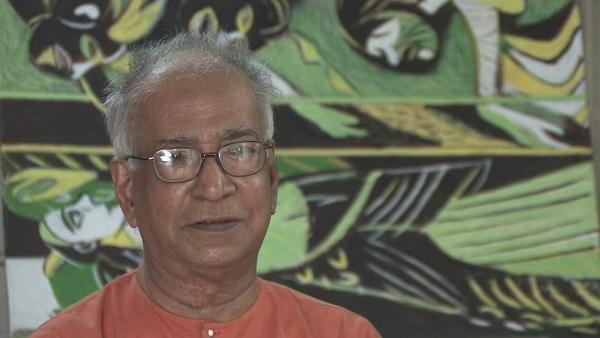NEXT STORY

The Madras Art School, Devi Prasad and a glass of scotch!
RELATED STORIES

NEXT STORY

The Madras Art School, Devi Prasad and a glass of scotch!
RELATED STORIES


|
Views | Duration | |
|---|---|---|---|
| 1. Childhood in Kerala | 1 | 405 | 03:07 |
| 2. Mahé, a ‘comic town’. Silk, schools and... | 136 | 03:51 | |
| 3. School in Mahé | 1 | 79 | 03:07 |
| 4. Mahé’s political underground – ‘I... | 86 | 02:10 | |
| 5. Wood sculptures, temples and study in Mangalore | 118 | 03:11 | |
| 6. Discovering the art of the rest of the world | 87 | 02:43 | |
| 7. From Economics at Presidency College, Madras to the Quit India... | 61 | 03:56 | |
| 8. The Madras Art School, Devi Prasad and a glass of scotch! | 112 | 03:37 | |
| 9. My father’s visit and getting sent to prison | 63 | 05:04 | |
| 10. Release from prison, Gopal Reddy and going to Santiniketan | 68 | 04:26 |

You got an honours degree if you studied for 3 years straight away for 3 years. And then if you got an honours degree and waited a year and paid some money, you could get an MA degree at the end. It was the old system. Well, I started all right but I had all the time, at that it was the time of the nation was brewing for the Quit India movement. Then, when I was in the second year, the Quit India movement started.
Could you just say what you were reading, what subject you were studying?
Economics, yes. In fact I wanted to do literature really but then somehow everyone thought that I should do economics, literature you can always do, this sort of thing. So I used to do a lot of reading here, but then here it was economics. But somehow my mind didn’t really settle down into the economic studies of that time. There again, economic study in those days meant the study of the market forces, I mean, not anything else. In fact I remember in the first year when I was asked to do a special seminar project, I had written an essay saying that what should get distressed, the market forces or men, kind of a thing. Anyway the whole question is at the time when there was so much of a difference in economic status of various people, the question of leaving ourselves adrift on market forces doesn’t make much sense. Anyway, all the same, I was supposed to be good in my studies there.
Had you already read quite a lot of Gandhi literature?
Yes, I had.
So wouldn’t that make it difficult for you to read economics?
I know, that is true. In fact there was, I remember his name is... Somebody had written about the economics of Gandhian thought at that time, which I don’t remember exactly his name, he’s a sort of Westerner. And I remember having found his book at that time. And in any case, so after when the Quit India movement started, then I was one of the leaders of the strike at the college. So, well, we I think struck work and then the college closed for quite a while, about 2 weeks at least to start with. Then later things cooled back then people went back to studies; I also went back. Then we were having various other group meetings and things of that kind. And through the next months we had kind of loose contact with other colleges and things like that. And I used to at that time stay in private digs because, well, the hostel dues were too high for my brother to pay. So... and later moved into stay in a mosque in fact. At the time before the time we picketed the Madras Secretariat and got arrested, I was staying in a mosque. And my things were all lying there in the mosque. And that made quite a bit of a change.
KG Subramanyan (1924-2016) was an Indian artist. A graduate of the renowned art college of Kala Bhavana in Santiniketan, Subramanyan was both a theoretician and an art historian whose writings formed the basis for the study of contemporary Indian art. His own work, which broke down the barrier between artist and artisan, was executed in a wide range of media and drew upon myth and tradition for its inspiration.
Title: From Economics at Presidency College, Madras to the Quit India movement
Listeners: Timothy Hyman
Timothy Hyman is a graduate of Slade School of Fine Art, London, in which he has also taught. In 1980 and 1982, he was Visiting Professor in Baroda, India. Timothy Hyman has curated many significant art exhibitions and has published articles and monographs on both European and Indian artists.
Duration: 3 minutes, 57 seconds
Date story recorded: 2008
Date story went live: 10 September 2010